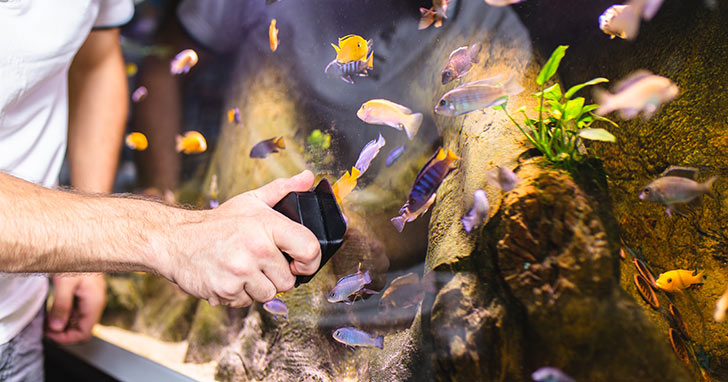Algae Identification in Freshwater Tanks and Proper Removal
Owners of both freshwater aquariums and marine aquariums are concerned with algae. Algae has been around for billions of years, and new strains are still being discovered. It is estimated there may be over 37,000 species. Thankfully, not all these species grow in tanks, and some algae in small amounts are not a problem in aquariums. Let us take a look at some of the most common types of freshwater algae that develop and ways you can eliminate them or keep them in check. Black Brush Algae (BBA) To rid your tank of this algae: Manual algae removal is the first line of defense. To prevent re-growth on equipment, it can be cleaned in a diluted bleach solution and rinsed well before being returned to the tank. Affected plants should be trimmed and aquascape should be cleaned and returned to the tank. A more natural approach is the introduction of Siamese Algae Eaters or Black Mollies into your tank (if compatible with other species present) to eliminate Black Brush Algae. Blue-Green Algae or BGA (Cyanobacteria) To rid your tank of this algae: This is a tough algae to get rid of, as it is invasive. You can manually remove from plants or prune them, scrub rocks, and vacuum the gravel. While you can purchase antibiotics to treat this form of algae, a first step may be to employ a blackout method to try to starve the algae of light, use a water conditioner, improve waterflow and avoid overfeeding your fish. Brown Algae To rid your tank of this algae: Remove with your hand or a suction, wipe down hard surfaces, clean your gravel and make more often water changes. You can also use resins that absorb extra phosphates and silicates in your tank and reduce the level of light in your aquarium. Algae eating fish such as herbivorous Plecos, Catfish or Snails will eagerly consume most forms of brown algae. Green Hair Algae To rid your tank of this algae: Manually remove as much algae as you can, prune affected plants, increase your tank water changes to twice a week, and keep fish feeding low. Also, reducing light may help slow growth to a manageable level. Green Spot Algae (GSA) and Green Dust Algae (GDA) To rid your tank of these algae: You can remove algae by pruning affected plants and scraping it off the aquarium’s surface. To prevent it from returning, you can reduce the amount of lighting in your tank or add Nerite snails, (if compatible with other species present) as they are effective in eliminating this type of algae. Green Water To rid your tank of this algae: Reduce the amount of lighting in your tank, avoid overfeeding fish, employ an effective filtration system, UV sterilization or add a Diatomaceous filter. Staghorn Algae To rid your tank of this algae: Manually remove as much algae as you can, trim old growth on live plants, decrease the amount of lighting in your freshwater tank, increase water changes and create water movement. In Conclusion |
|
|
|



